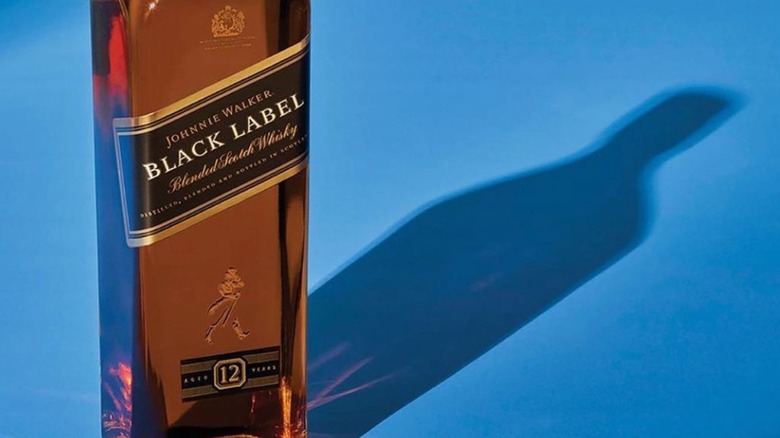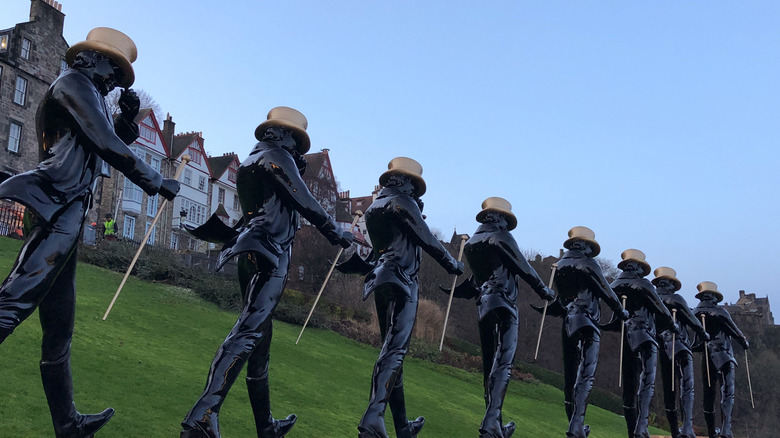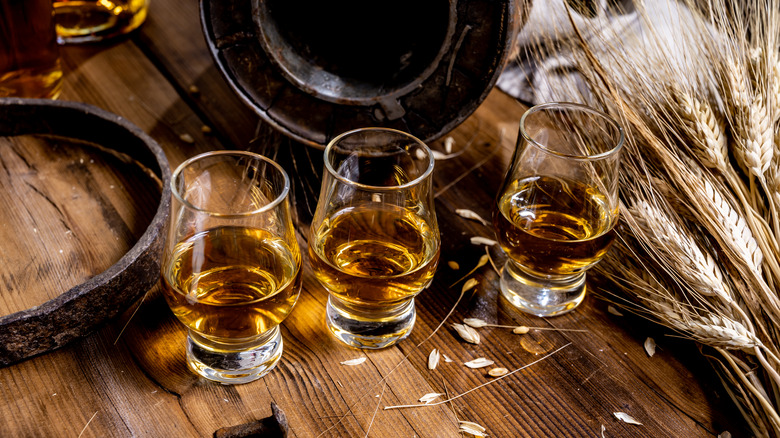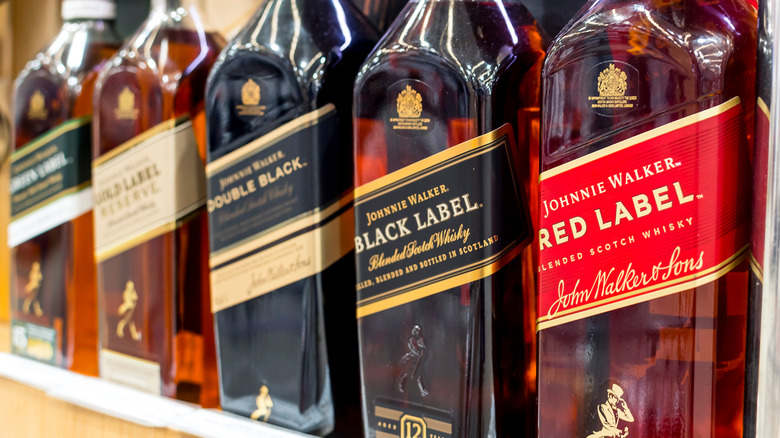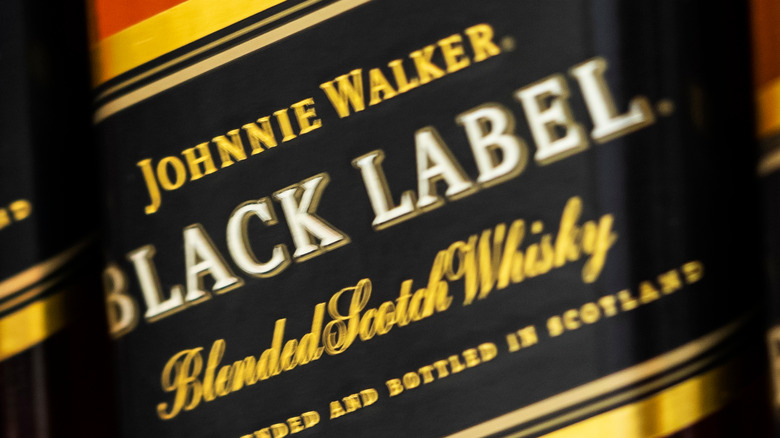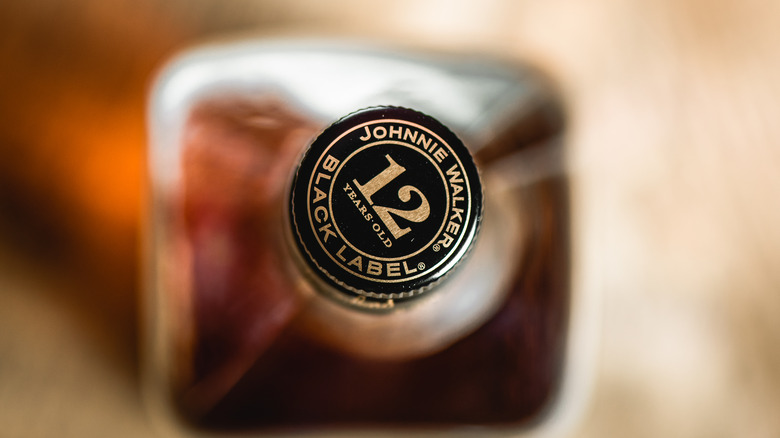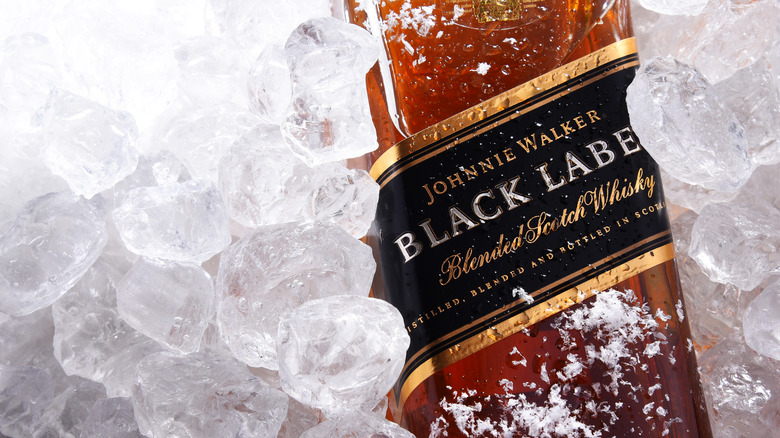Johnnie Walker Black Label: The Ultimate Bottle Guide
The world of whiskey runs deep. There are bourbons, Canadian ryes, American ryes, Irish whiskeys, Japanese whisky, Scotch whisky, single-malts, grains, and blends. Even if you know nothing about whiskey, there is a brand you have certainly heard of and whose bottle and emblem you can probably describe in detail.
Johnnie Walker is the whiskey of all whiskeys. It's been an icon of spirits for nearly two centuries and it will continue to be recognized for centuries to come. What started as a simple shelf stock has exploded into a spirit that can be ordered anywhere, from a pub to an airplane. Despite its outspread attainability, Johnnie Walker is certainly not tacky. It has sustained for a reason.
Founder John Walker's devotion to consistency is the backbone of this scotch, and there is no bottle of Johnnie Walker's more fundamental in this purpose than Black Label. For those unfamiliar, this scotch is the perfect place to begin your introduction and chances are it will make you eager to continue on afterward.
The history of Black Label
Unsurprisingly, this iconic brand comes from a storied origin. In 1820, the Walker family farm was sold and the money made was used to open a grocer's shop in the town of Kilmarnock. At the time, grocers stocked their shelves with single malt scotches; however, their quality lacked consistency. John Walker, in charge of the new business, was not satisfied with this shortcoming and began blending different bottles until the product always met the standards of the previous sip, and all the ones that followed.
When John passed away in 1857, his son, Alexander, took over the thriving business. By that point, Great Britain was the epicenter of the Industrial Revolution, and goods were able to reach every corner of the globe via railroad. Ten years later, Alexander introduced Johnnie Walker's iconic square bottle and slanted label, two strategies mindfully implemented to help the scotch stand out on shelves beside competitors.
In 1908, Tom Browne, a British illustrator, created the Striding Man, an emblem commissioned by the Walker family to promote their brand's energy, innovation, and forward thinking. Within the next 30 years, Johnnie Walker was available in 120 countries, and filled the glasses of everyone between socialites and statesmen.
Today, Johnnie Walker is the biggest whiskey brand in the world, and despite this unparalleled success, Johnnie Walker continues to encourage itself and its customers to "keep walking." Although Johnnie Walker is available in a wide variety of styles and editions, Black Label is the best way to take your first steps.
Single malt vs. grain vs. blended whiskey
Scotch whisky is only to be classified as such if it's made entirely in Scotland. Although all single malt scotches are distilled from the same three ingredients, the location they're produced in makes for a big difference in both texture and flavor profile. Scotches can come from four regions; the Highlands, the Lowlands, Speyside, and Islay, each home to different natural resources that contribute various levels of fruitiness, freshness, malt strength, and smoke.
Grain whiskeys substitute barley for maize, wheat or a combination of the two. They are lighter than single malt whiskeys and have a creamier texture, which make them great for blends. Their mellowness helps tone down the bite of single malts while also helping to uplift their flavor notes.
Blended whiskeys, which is the type of whiskey showcased in every bottle of Johnnie Walker, is a blend of single malt and grain whiskey. The right blend makes for a broader depth of flavor while not sacrificing a lack of consistency. The blend is always the exact same, so the outcome will always be the same. Because blended whiskeys are not aged like their two counterparts, their age refers to the youngest whiskey within the blend.
These three types of whiskeys are distinctly different from one another, but they're not meant to be compared. Each is produced, bottled, and purchased for a different purpose, but if you're looking for a welcoming avenue to scotch, blended whiskey is a good place to start, and Black Label is a standard of the craft.
The Black Label process
Although Johnnie Walker only produces blended whiskeys, the process behind making the single malts and grain whiskeys that go into it are what have allowed Black Label to stand the test of time. All the different elements of whiskey-making may seem trivial, but the most subtle variation makes a big difference in the final product.
Whether the scotch being made is using barley or grain, these very starchy cereals must be converted into soluble sugars. This is done through malting, a natural process done through germination. The cereal is added to water and heated to a temperature at which the cereal begins to grow. Then, the cereal is dried in a kiln, or oven. From there, the dried cereal is finely ground and then readied for fermentation.
The sugars converted through malting are drawn out from the cereal by a mixing with hot water. Once the two are separated, yeast is added to begin fermentation. Distillation is next, and is most often done twice to enhance the alcohol content and flavor profile. Distilling includes boiling the liquid in a copper still. The more contact the liquid has with the still, the more flavorful it will turn out. After two distillations, the distillate is ready to be matured.
Scotches must be aged for no less than three years in oak casks, per the Scotch Whisky Association. These oak casks are what gives Scotch whisky its caramel color and earthy flavor. In fact, it's estimated that about half of the whiskey flavor comes from the barrel it's aged in.
What does Black Label taste like?
Johnnie Walker Black Label is a 12-year, blended Scotch whisky. As stated earlier, the age of a blended whiskey refers to the youngest whiskey in the blend. Black Label, however, is made using only 12-year-old whiskeys, which is what makes its flavor so tried and true. The whiskeys that come together to craft Black Label are brought from all over Scotland. There is no single region that dominates the blend, and its wonderfully balanced, straightforward flavor and texture is a reflection of this harmony of resources, technique, and style.
Black Label is the beauty of blended whiskey. Its aroma provides the nose with sweetness, oak, and smoke, all of which are a precursor to the variety of flavor notes that follow. Because Black Label is only 80 proof, there is little to no burn on the palate, according to The Whiskey Wash. The base of this scotch is grounded in mellow honey, stone fruit, and vanilla, three characteristics often associated with Speyside-style scotches. Subtle spice and creamy toffee on the tongue pay homage to the delicate flavors of the Highlands, while the finish is a product of Islay, as light smokiness rounds out every sip.
Black Label is simple and to the point and it's an icon for a reason. The blend has remained the same for over a century and its sustained popularity is a testament to quality and reliability. If there was such a thing as a greatest hits of scotch, Johnnie Walker Black Label would most certainly have a spot reserved.
The applications of Black Label
Black Label's straightforwardness and accessibility make it perfect for a wide array of uses. Sipping it neat or on the rocks is a perfect introduction to Scotch whisky and the simple and iconic scotch and soda probably would not be so if it weren't for Black Label.
Black Label's potent flavor and lack of bite also make it a great cocktail companion. A scotch Old Fashioned is certainly worth a try and classics like the Rusty Nail or Penicillin really don't require anything other than Black Label. Black Label is the perfect scotch for highballs also. Johnnie Walker even recommends highballs like a Johnnie and Lemon, Johnnie and Ginger, and Johnnie and Peach.
Black Label fulfills any requirement you will need from a scotch. It can be dressed up or dressed down. It can bring refreshment as well as comfort. Whatever you're looking to accomplish, Black Label will help you get there.
How much does Black Label cost?
Part of the reason Johnnie Walker has been able to remain the leader of its industry for so long is because it has always been an easily accessible spirit in regards to both taste and price point. Today, this iconic Black Label bottle, fit for any need, is available for just $28.
There are more complex scotches, longer aged scotches, more exclusive scotches, and even better tasting scotches, but jumping into the world of whiskey is a daunting task. With so many styles and brands to choose from, rolling the dice on an expensive bottle you may or may not enjoy probably isn't the best way to start.
The stronger peat and bite of single malts may shoo away those new to scotch and, more so, they could end up being down over $60. Even if it turns out that scotch is not for you, Black Label is a balanced blended whiskey that can either enhance your interest or dismiss it. Either way, you'll still only be set back $30.
Furthermore, if you find out scotch isn't your thing, this inexpensive bottle can remain on your home bar for future guests and you can rest assured they'll always be happy to see the Striding Man.
